Trieste Descends Once Again
Our first float, Trieste, has been deployed in the Indian Ocean
Trieste—NAS Ocean Studies Board, Washington, DC
Location: 87° 20′ 43.08” E; 54° 56′ 15.72” S
Time: Fri 01 MAR 2024 02:18 UTC
Temperature: 3.4°C, Wind 31 kts W
Float Number: 20075
Float Type: Apex
Float Program: SOCCOM
This float was adopted by NAS Ocean Studies Board in Washington, DC and named “Trieste” in memory of former OSB member and Ocean Elder – Don Walsh. Claudia Benitez-Nelson, who coordinated the float adoption, had this to say about Don:
In 1960, aboard the submersible Trieste, Don Walsh made a historic dive of nearly seven miles into the ocean’s deepest spot, Challenger Deep. My favorite quote: “Late in life, Dr. Walsh began to revisit his pioneering dive site. In 2012, at age 80, he advised the filmmaker James Cameron when he became the first person since Dr. Walsh and Mr. Piccard to make a dive into the Challenger Deep. ‘I feel so fortunate,’ Dr. Walsh said at the time. ‘Dudes my age are mostly sitting in rockers passing around snapshots of grandkids and great-grandkids.’
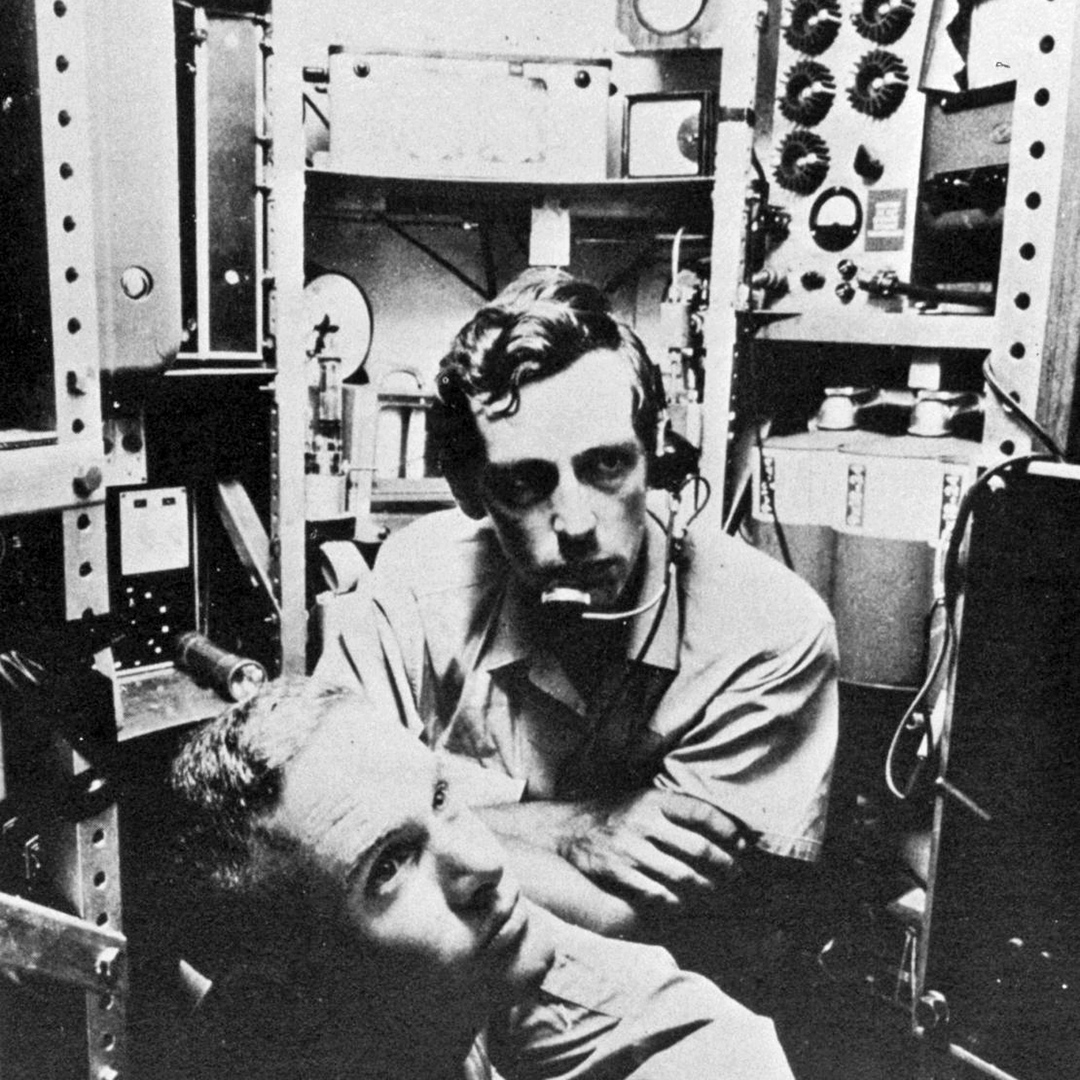
Lieutenant Don Walsh, USN, and Jacques Piccard in the bathyscaphe TRIESTE. Archival Photography by Steve Nicklas, NOS, NGS
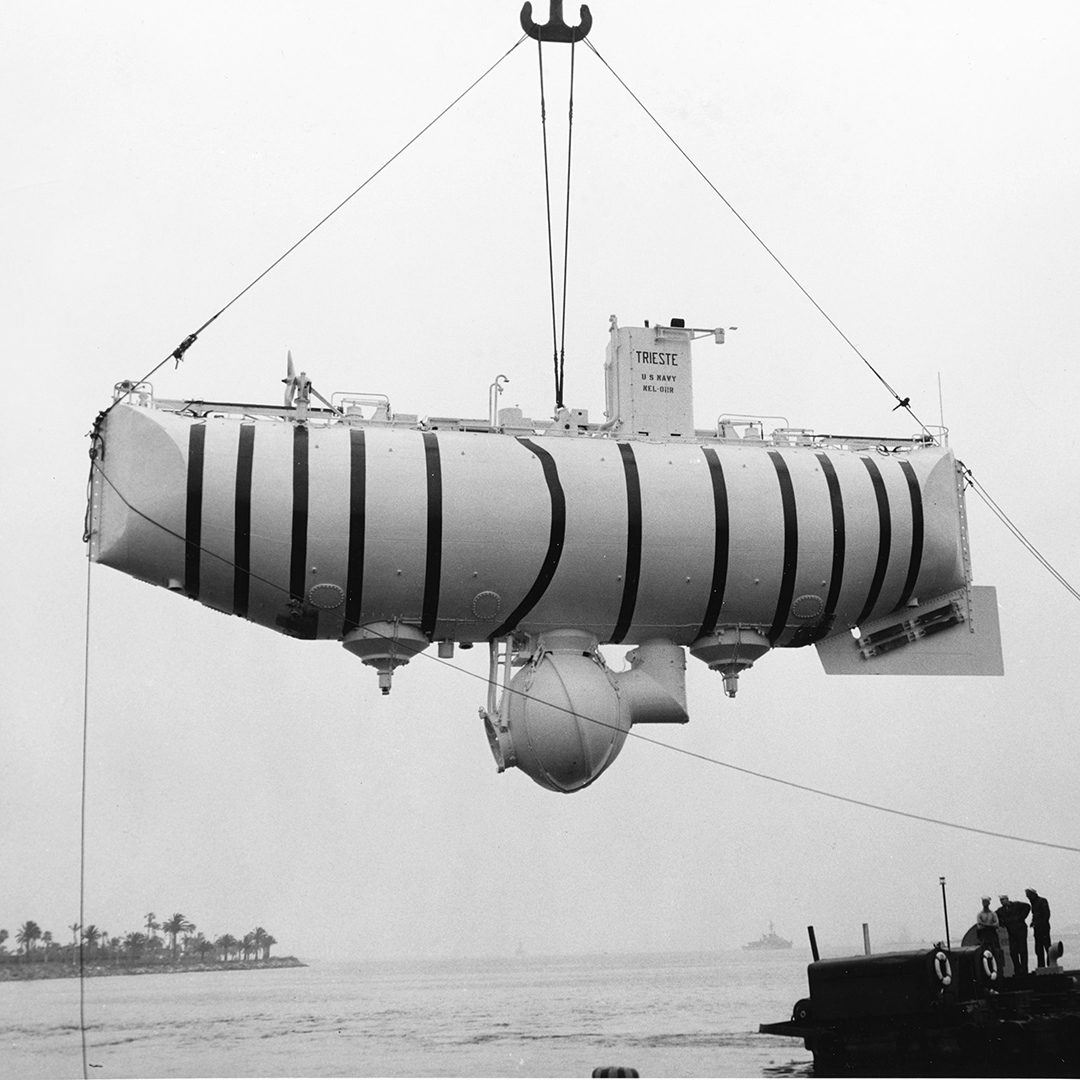
Bathyscaphe Trieste, an Italian-built deep-diving research submersible vehicle, was built to explore the deepest known part of the Earth’s oceans. Image released by the U.S. Navy Electronics Laboratory
Trieste was one of the first floats to be decorated on I08S and CTD watchstander Maria Sanchez Urrea did not disappoint! She carefully planned out the design using photos of the Trieste bathyscaphe. It’s much harder than it looks to recreate a photo design in Sharpie on a curved surface while the ship is rockin’ and rollin’, but Maria did a wonderful job! Scientist Cora Mckean even added a cute little octopus to keep the sub company on its descent.
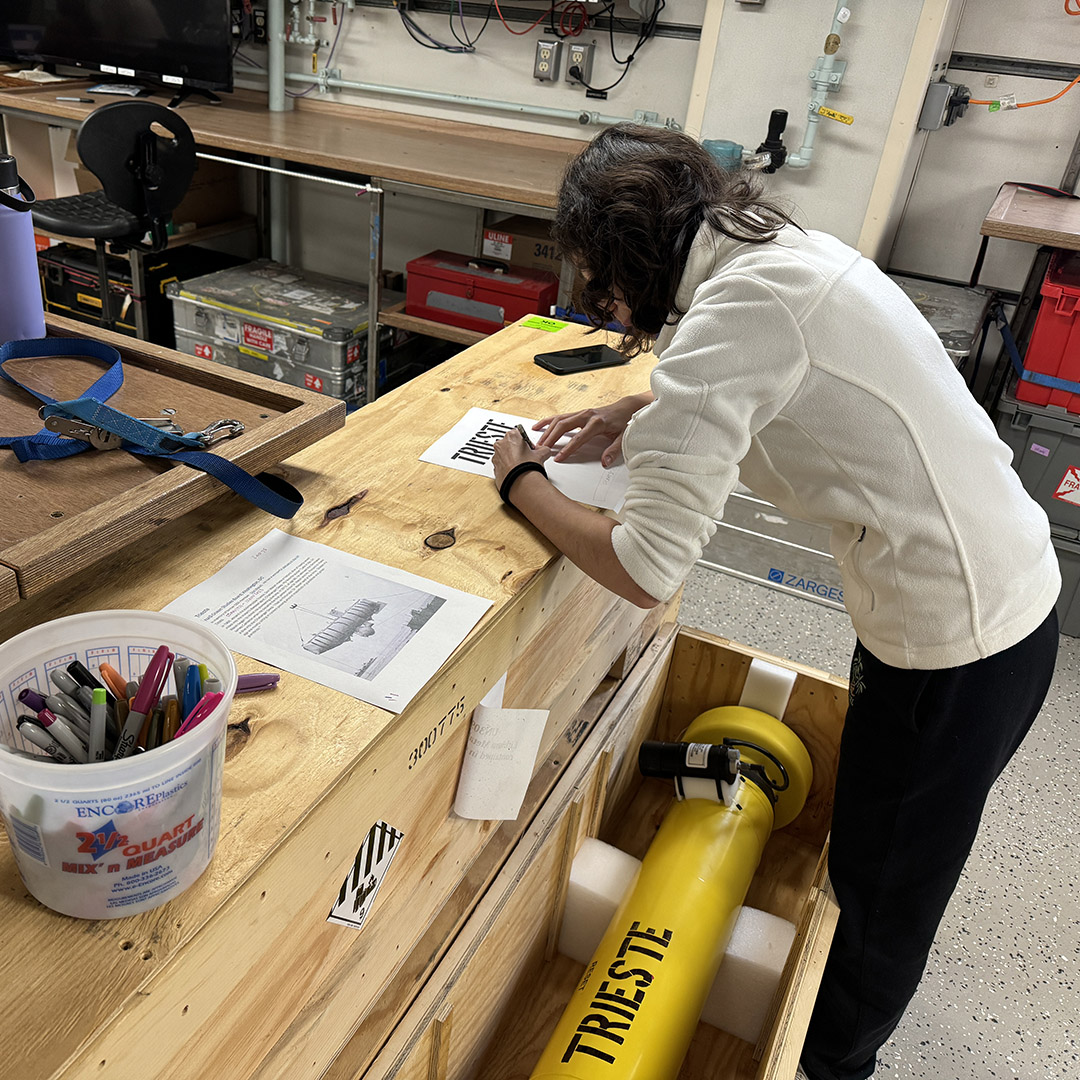
CTD watchstander Maria Sanchez Urrea did most of the decorating on Trieste, including a reproduction of the original bathyscaphe
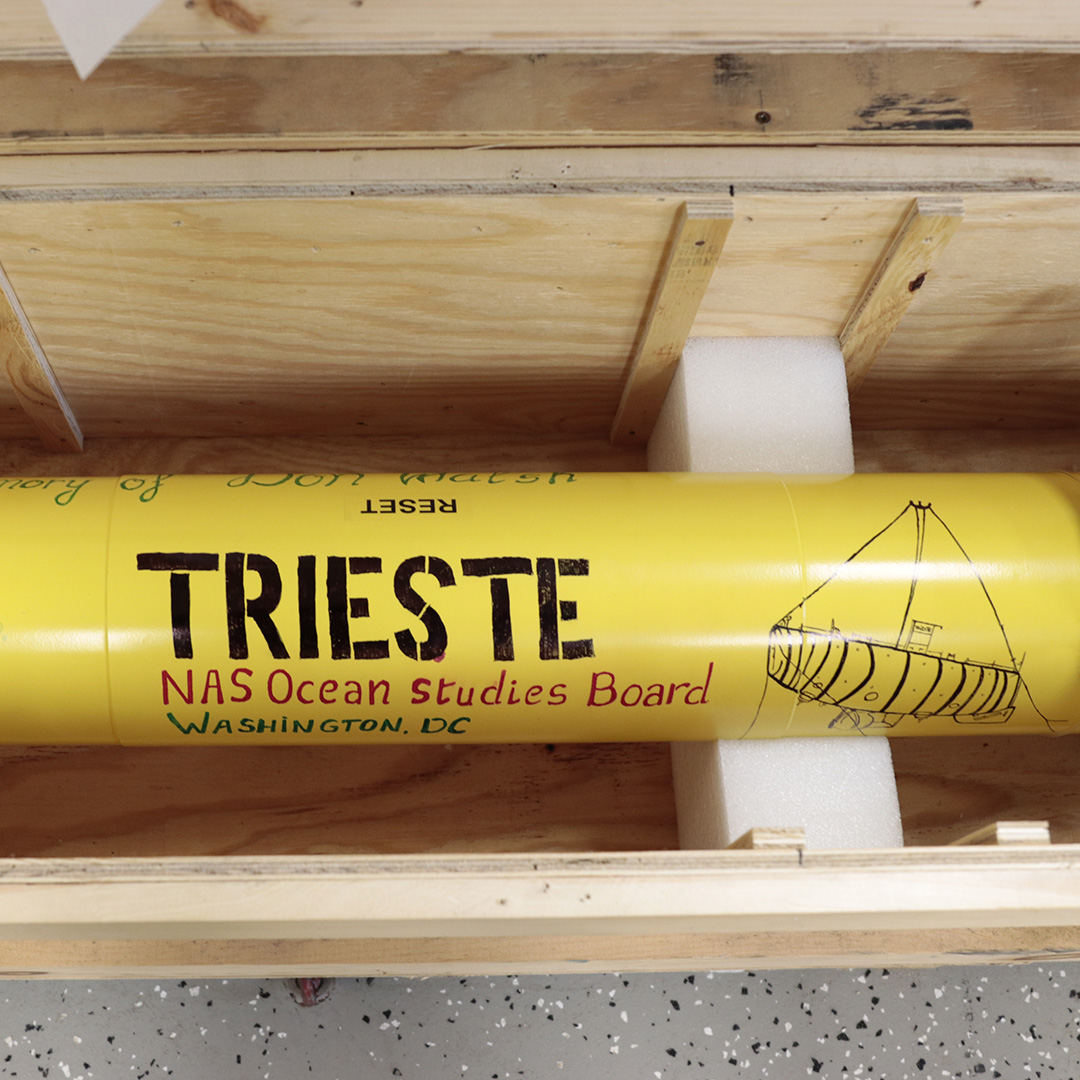
The finished product!
While it was the first BGC float deployment on I08S, it was by no means this crew’s first deployment, and everything went very smoothly. The float was carried out to the stern deck, where it was deployed by hand. First, a line was attached to the deployment disk on the float, which was then carefully lowered over the side into the water. When it was safely floating freely, the line was recovered and the float drifted slowly away.
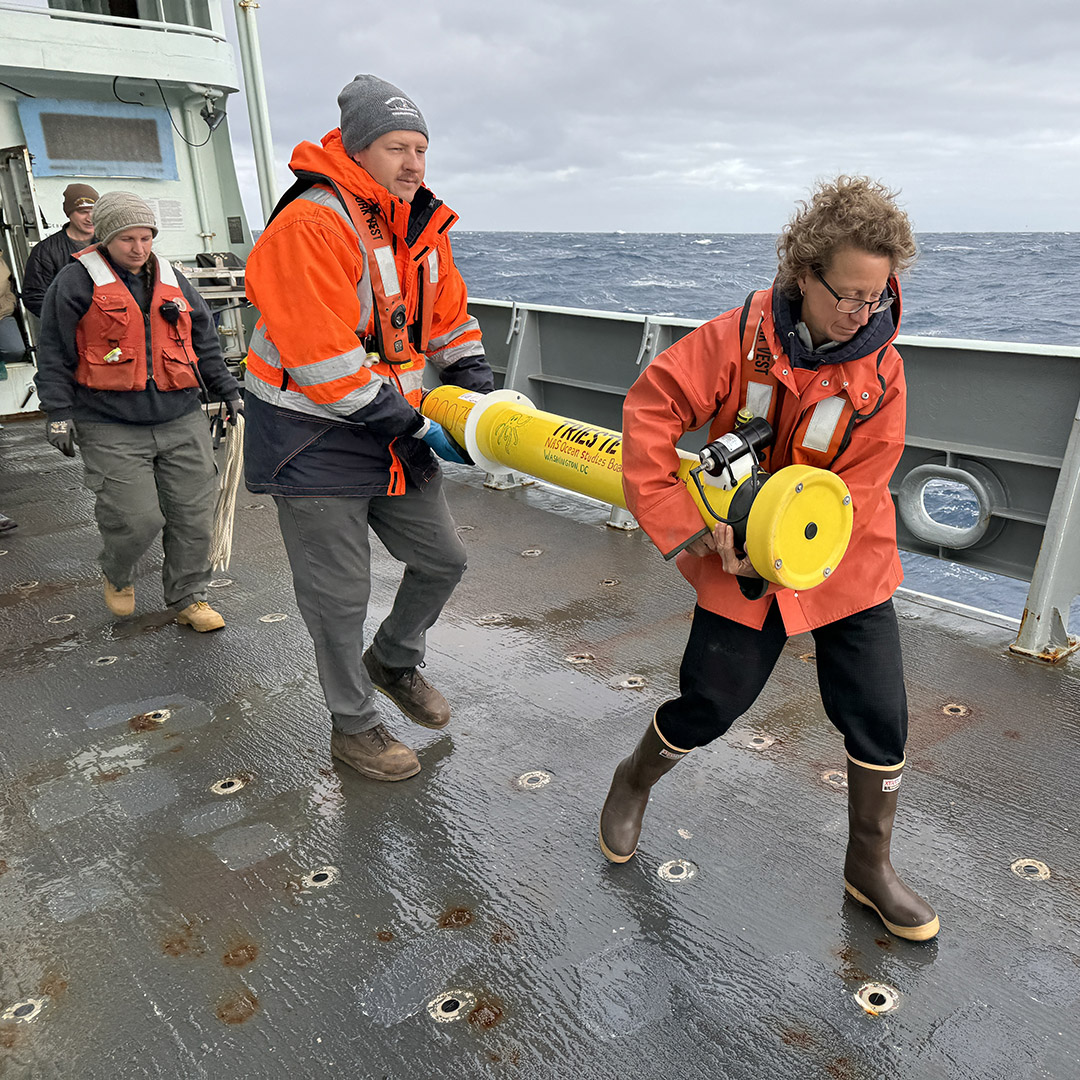
Trieste is carried out to the stern deck by the crew of the R/V Thompson
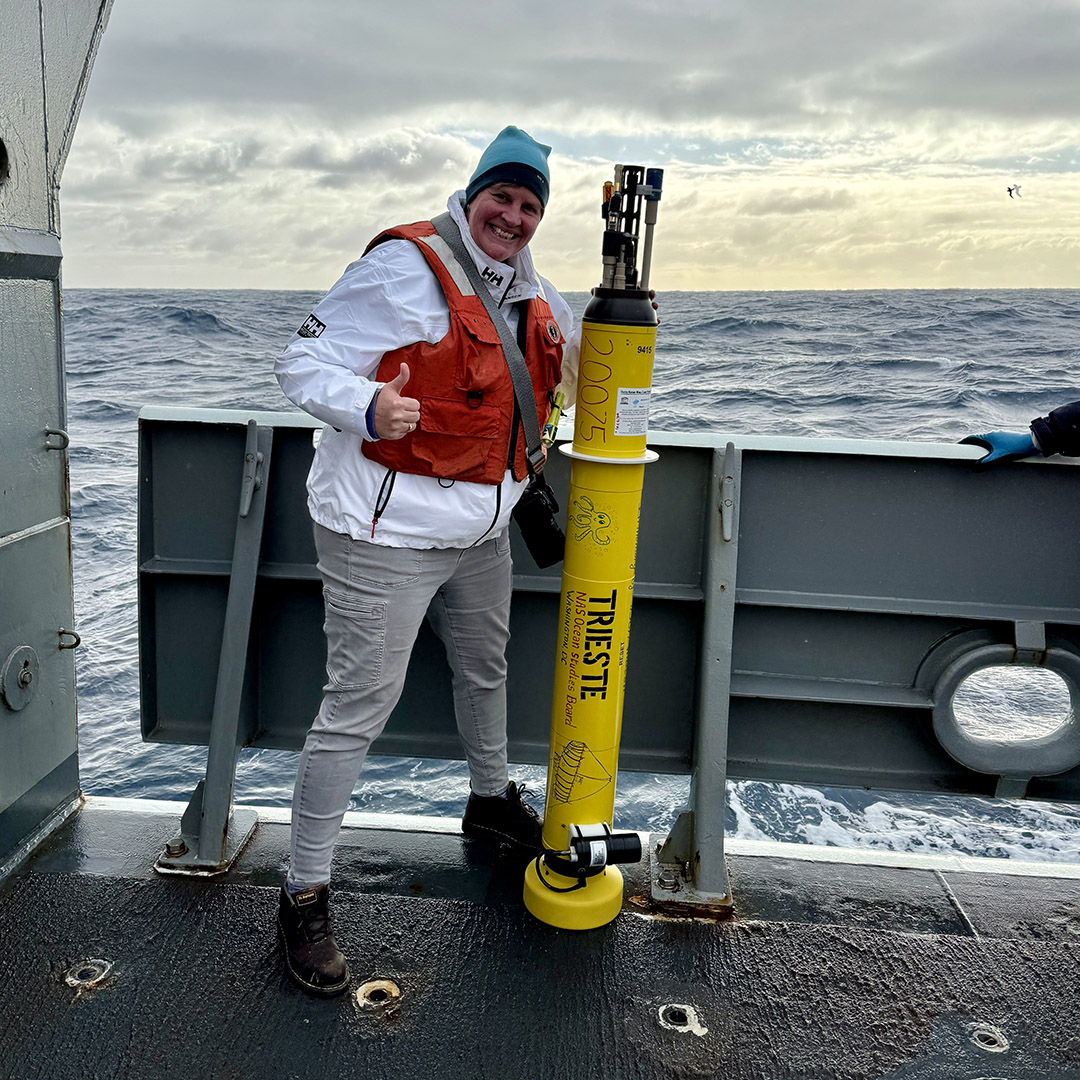
Trieste is ready to deploy.
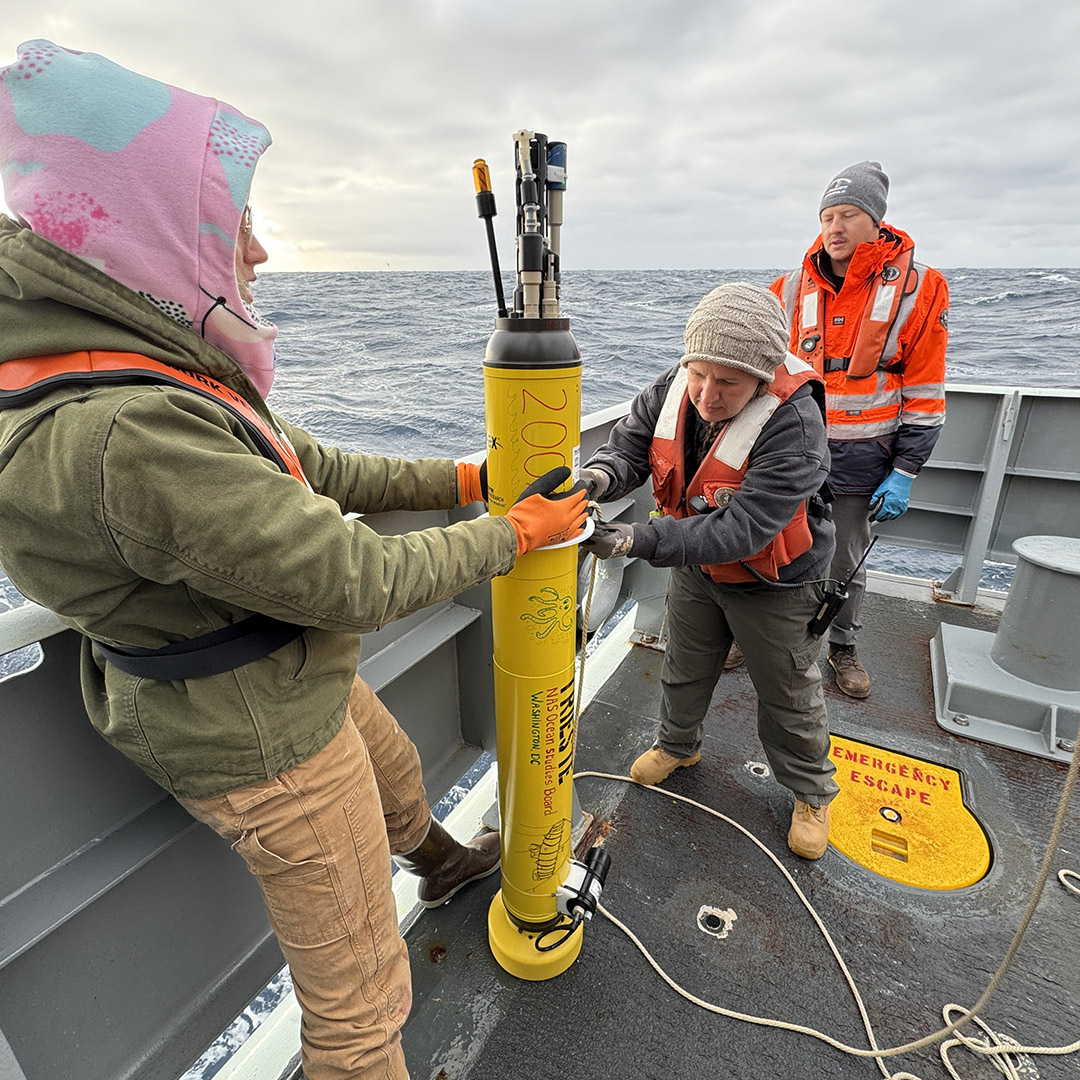
The line is threaded through the deployment disk on Trieste.
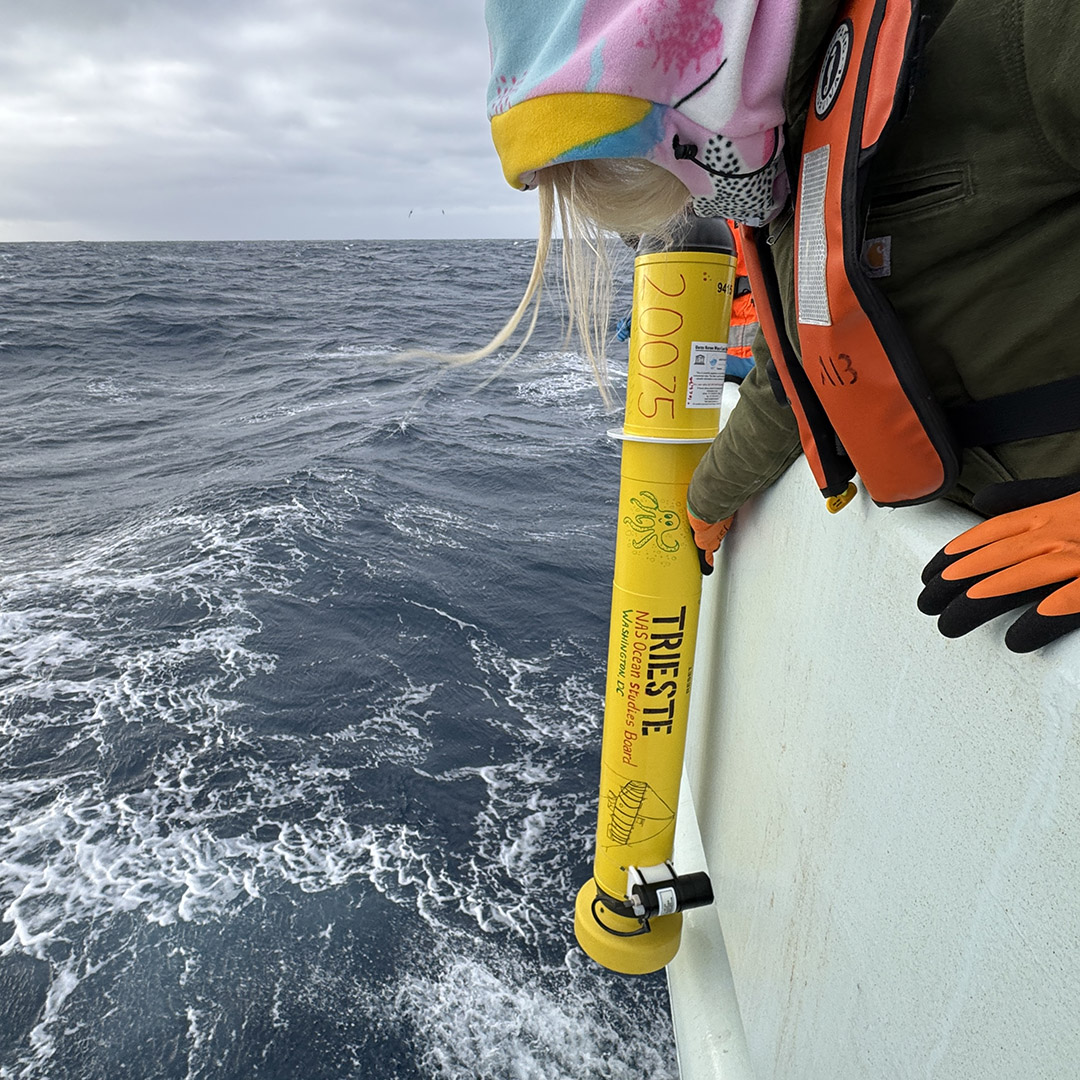
Trieste is carefully lowered over the side.
Trieste wasted no time in beginning its mission! We have already received the first profile from the float. All float data are freely available to the public and can be accessed on the GO-BGC or SOCCOM websites. Data for all adopted floats can be explored on the MBARI AdoptAFloatViz website. Plots like the one below can be used in a variety of ways to get students familiar with reading graphs. Questions can focus on basic understanding (What parameters are being measured? What are the units of each parameter? What are the minimum and maximum values of each parameter?) or can encourage students to interpret the information presented (What is the depth of the Chlorophyll maximum? What is the difference in salinity between the surface and deep waters? How would you describe the temperature through the water column?). There is more information available on the “For Educators” page on the Adopt-a-Float website, including background information on floats, how to access data, and featured lesson plans and activities.
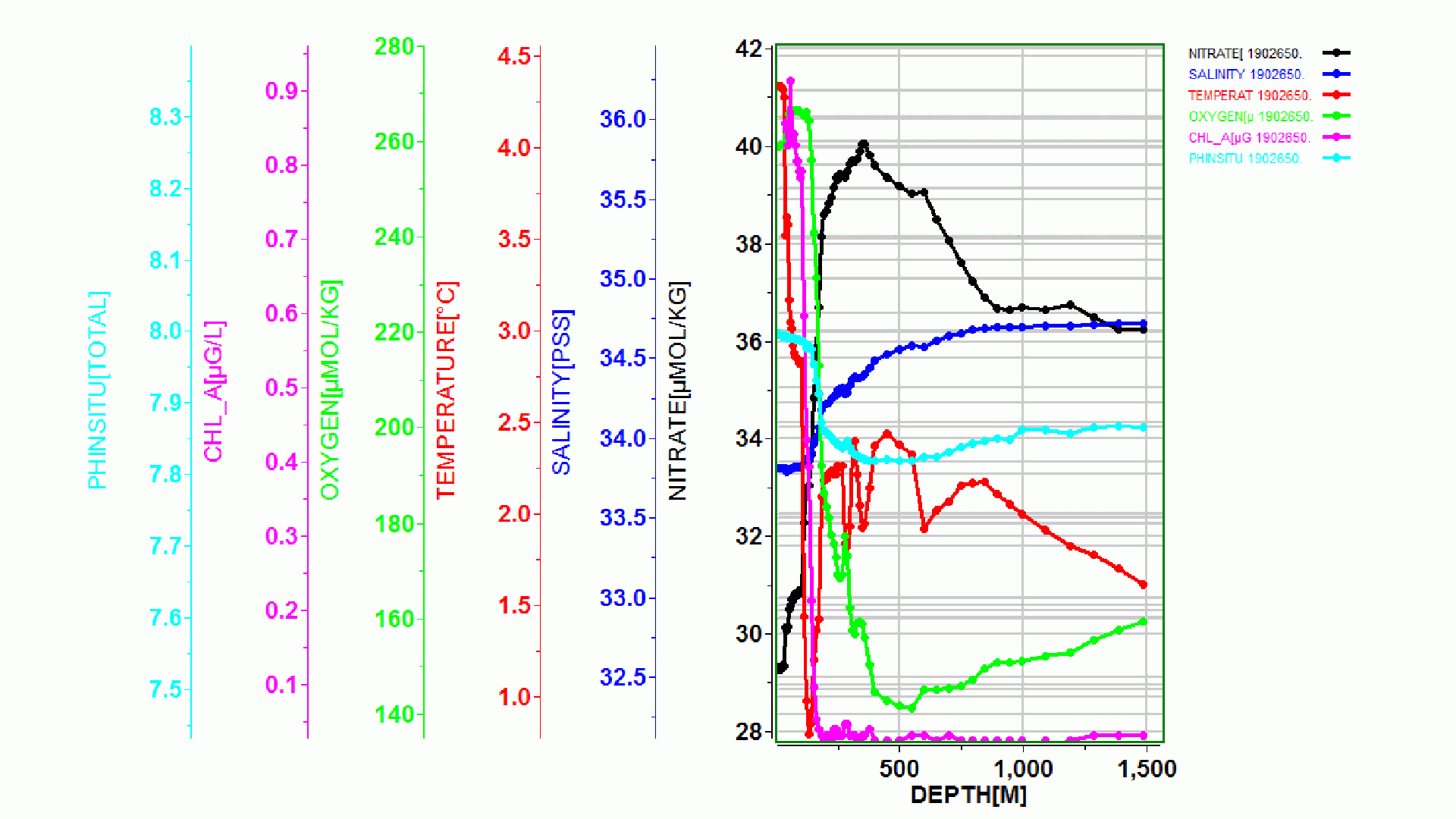
Trieste has already returned its first profile, which can be found on AdoptAFloatViz.
The wandering sea birds say goodbye to Trieste as it slips below the waters of the Indian Ocean, and we say a final thanks to Don Walsh, for all he has done to support ocean sciences in his work on the Ocean Sciences Board and throughout seven decades in the marine science community. The Trieste float will continue your mission of exploring the deep.
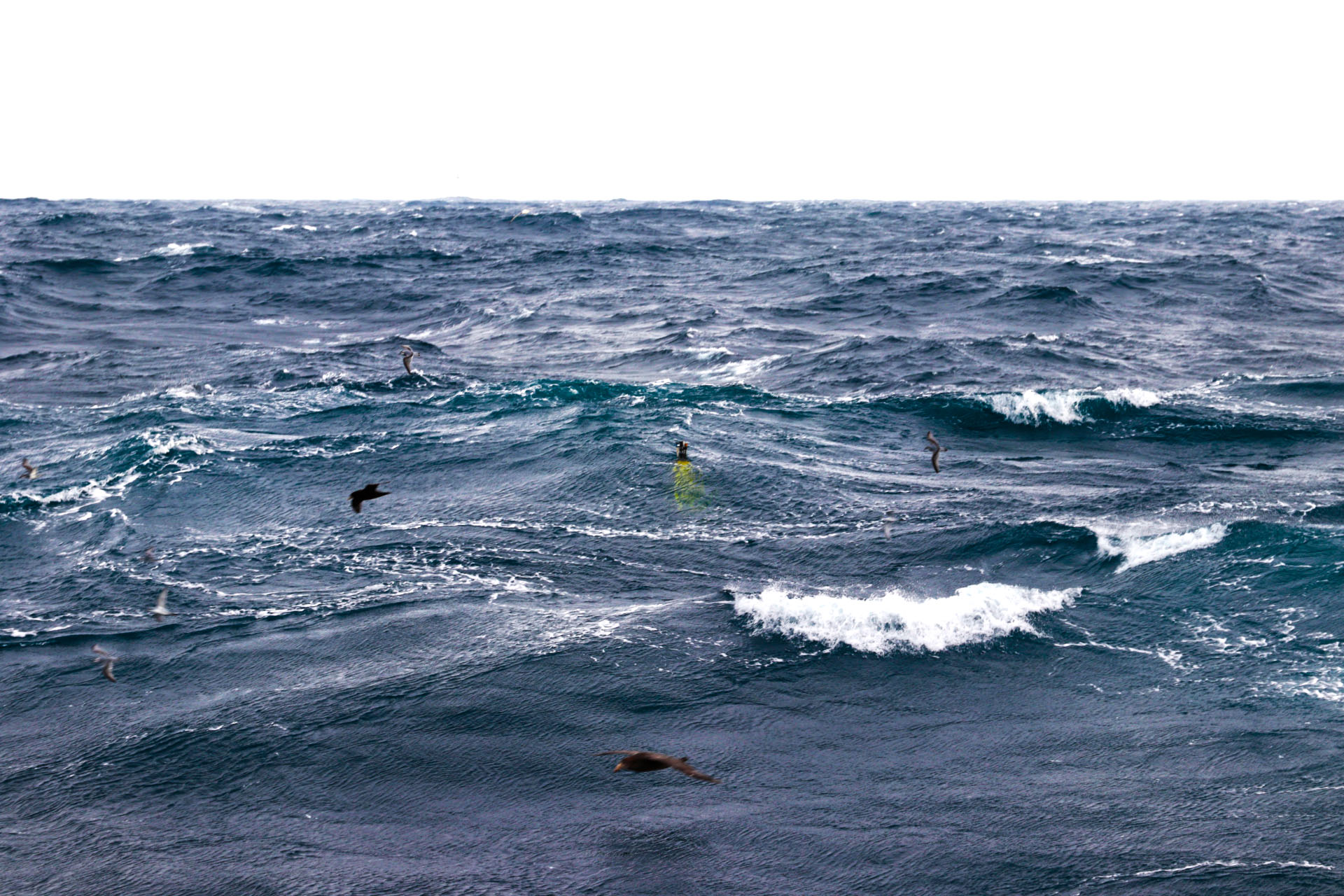
Curious birds examine Trieste as it prepares to descend.
Questions?
I’d love to answer any questions that you or your students have! Please feel free to send them to me at jenn@deepbluescience.com or find me on Instagram at @deepbluescience. As long as the wi-fi holds out, I’ll do my best to answer them.
All images are by Jennifer Magnusson unless otherwise noted.
